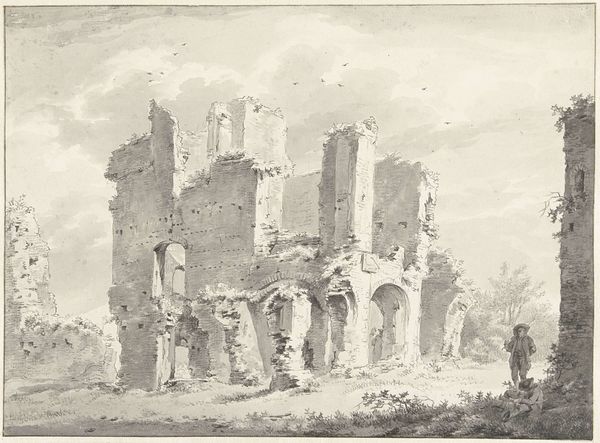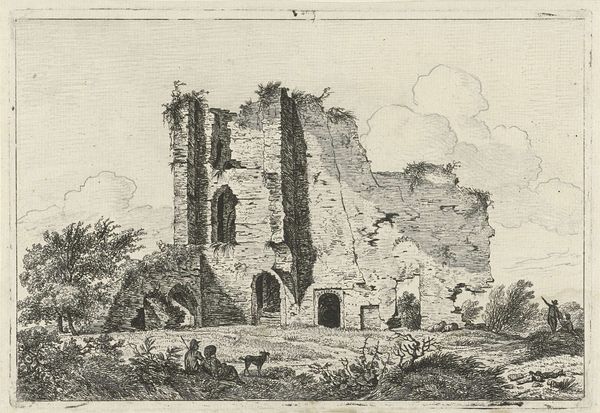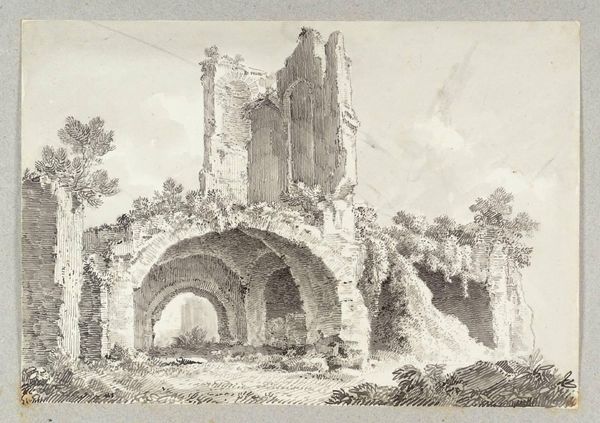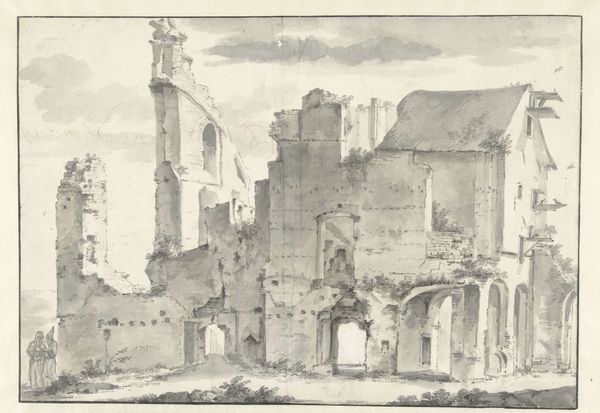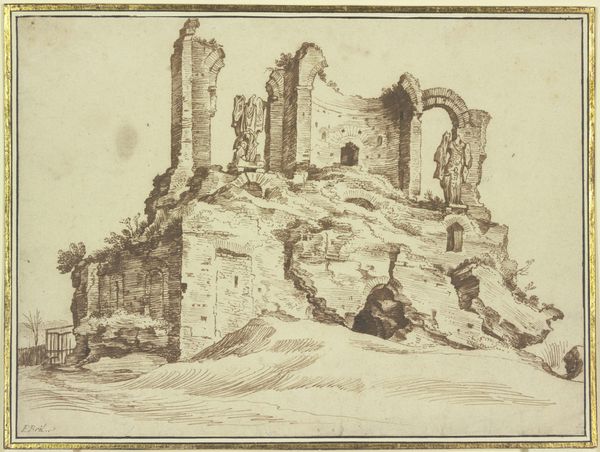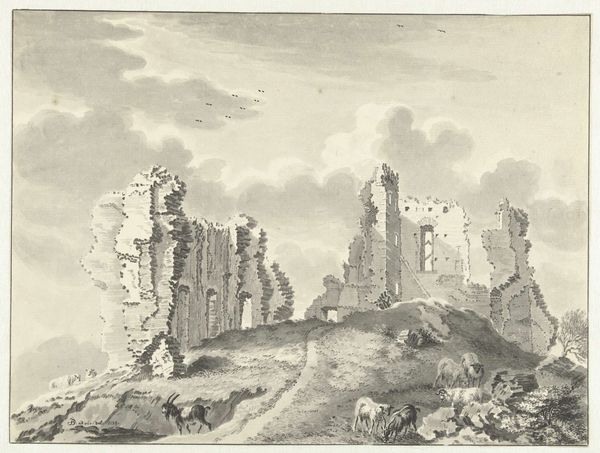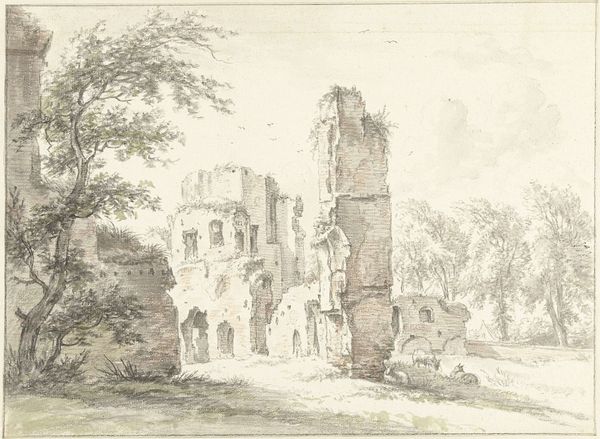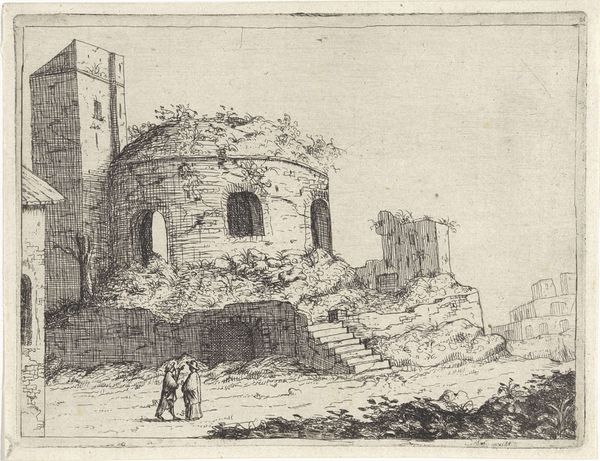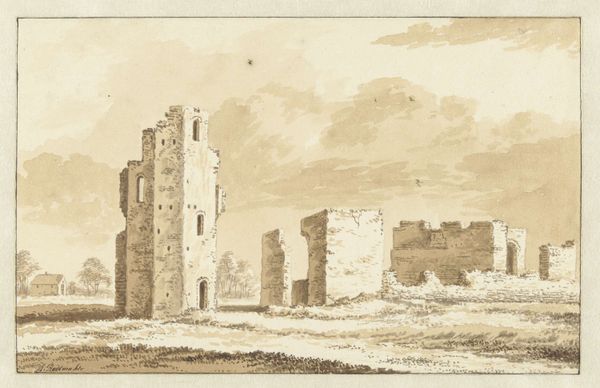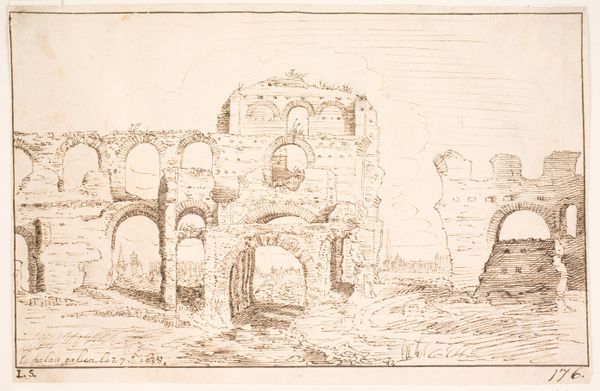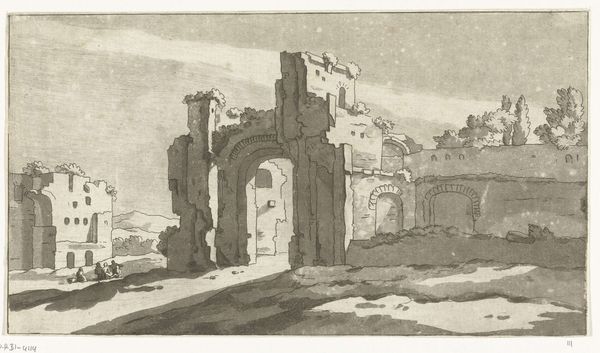
drawing, pencil, graphite
#
drawing
#
pencil sketch
#
landscape
#
romanticism
#
pencil
#
graphite
#
cityscape
#
northern-renaissance
Dimensions: height 224 mm, width 333 mm
Copyright: Rijks Museum: Open Domain
Editor: So, this graphite drawing is titled *Ruïne van de Abdij van Rijnsburg*, or Ruins of the Rijnsburg Abbey, created around 1812 by Gerardus Johannes Verburgh. It definitely evokes a feeling of melancholy. What stands out to you? Curator: I see a meditation on time and memory embedded within those crumbling walls. Consider the archway; it’s an ancient symbol of transition, but here, instead of leading us to a new space, it frames emptiness, a vanished world. What emotional resonances does the archway hold for you? Editor: That makes sense! I guess I saw it more literally as an entrance that no longer functions, but I can see it differently. So you are saying that Verburgh used ruins and archways to point at cultural memory? Curator: Precisely. Notice how the delicate pencil strokes capture not just the physical decay but also a sense of loss, a yearning for what was. The Romantic era was fascinated with ruins as symbols of the past and prompts for emotional reflection. But, have you considered what ruins represent for society itself? Editor: Hmm, a warning perhaps? About the temporary nature of everything? Curator: Indeed. And think about how the vegetation reclaims the stones, suggesting nature's enduring power versus human impermanence. It prompts us to reflect on the cyclical nature of civilizations, the inevitable rise and fall. Can you discern any specific emotions being conjured by this imagery? Editor: I think so. There’s a sense of peace almost, despite the decay. Maybe it’s because the scene is quiet. Curator: A profound observation! The silence echoes through history. Verburgh doesn't just depict a ruin, but opens a portal into the collective memory, a space for contemplation about humanity's place in the grand tapestry of time. Editor: I definitely understand that more clearly now. The image contains multiple layers of cultural meaning beyond just its aesthetic representation of ruins. Curator: Indeed. Art invites a multilayered reading and emotional response. It becomes more enriched as one seeks its cultural meanings.
Comments
No comments
Be the first to comment and join the conversation on the ultimate creative platform.


